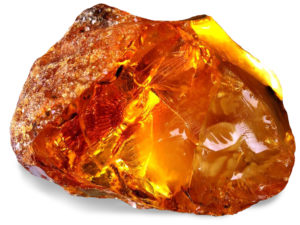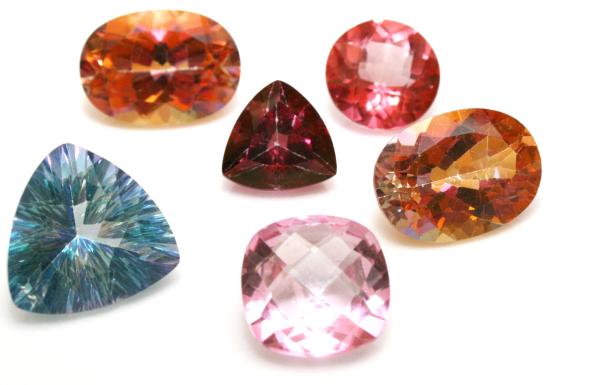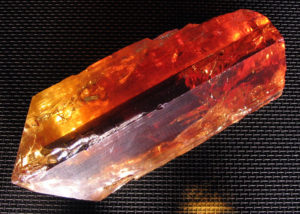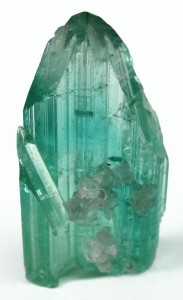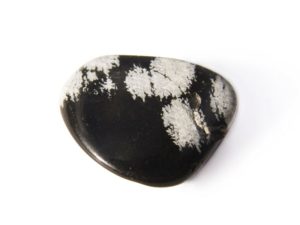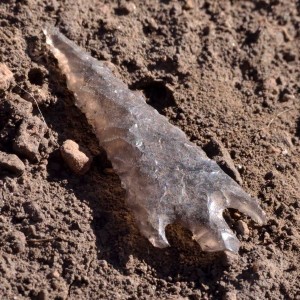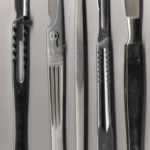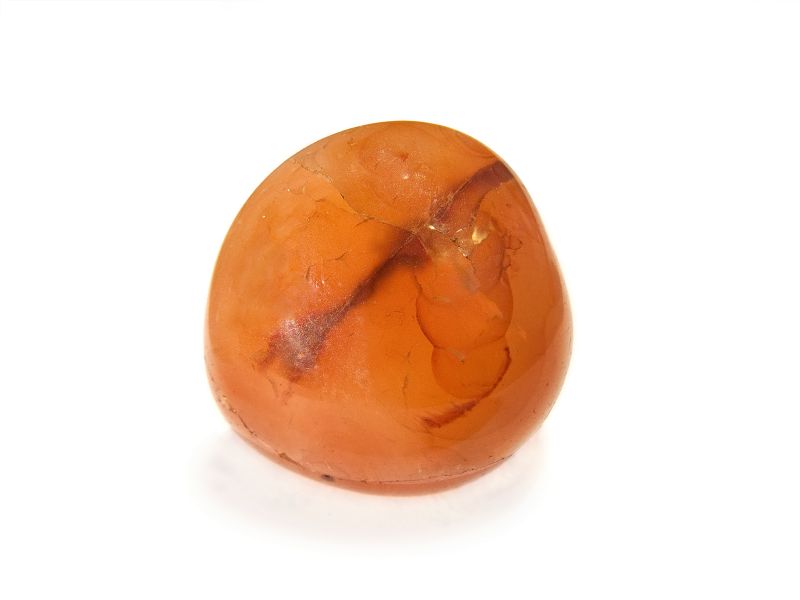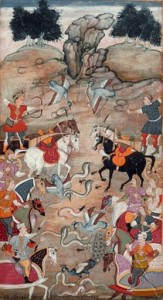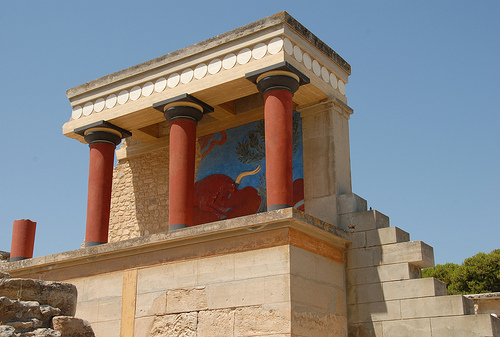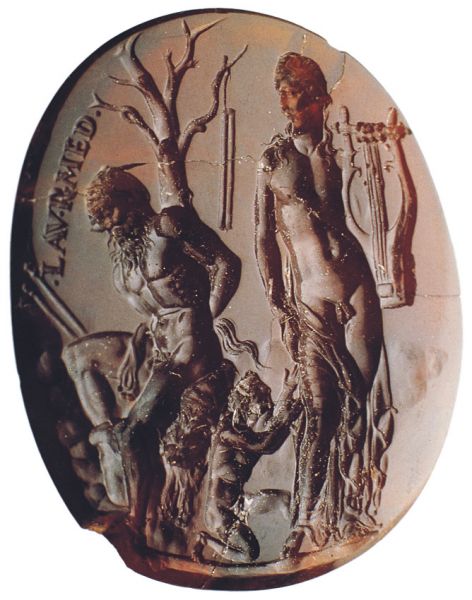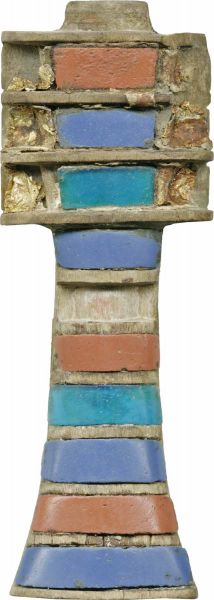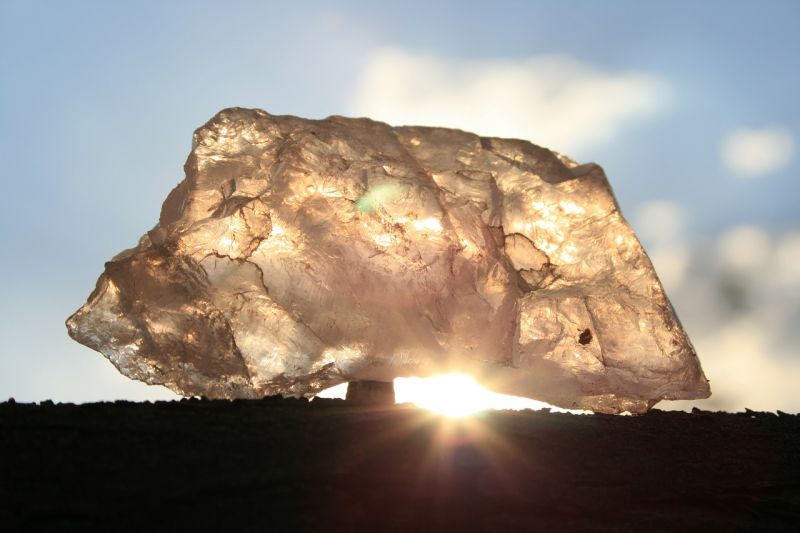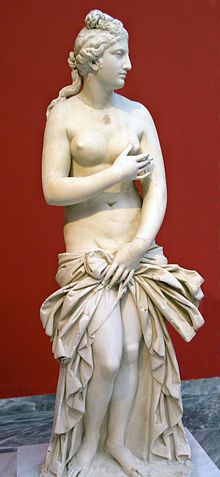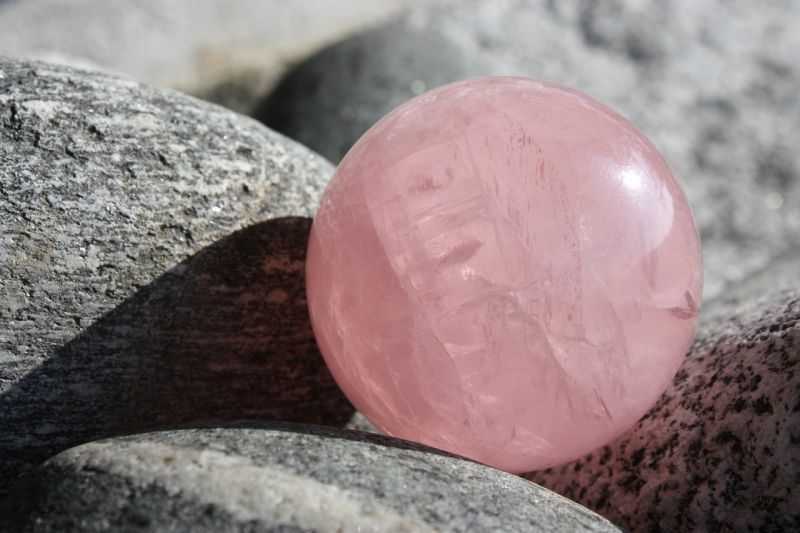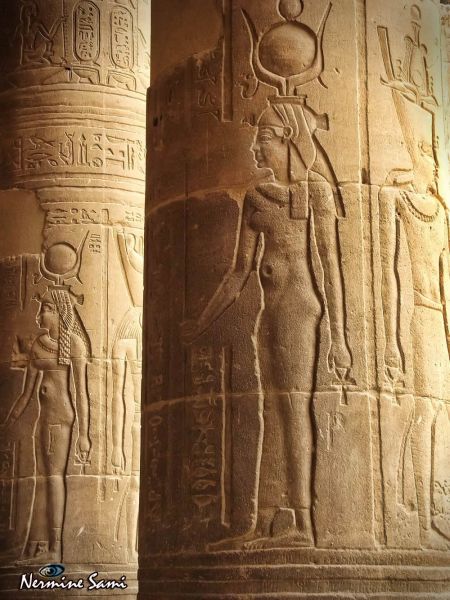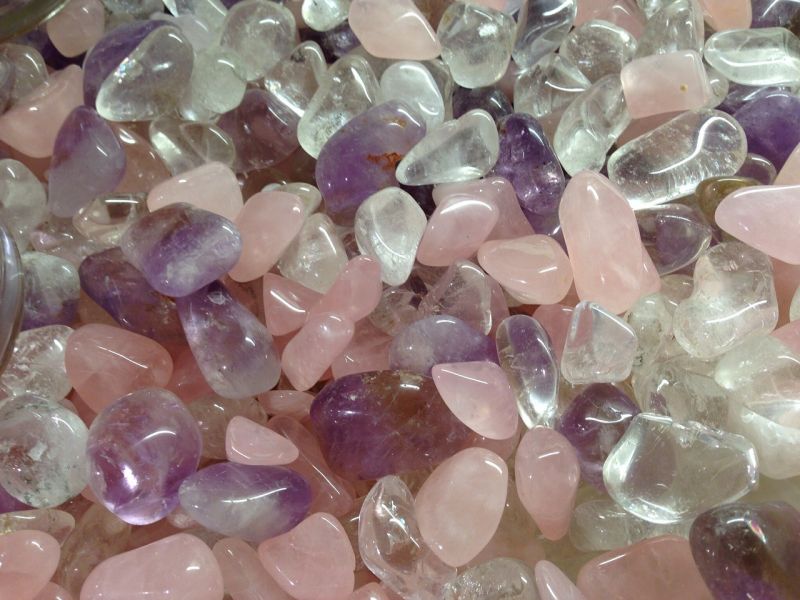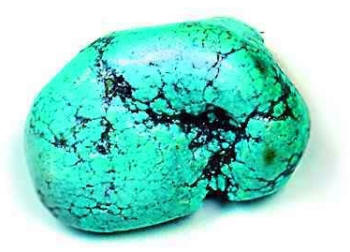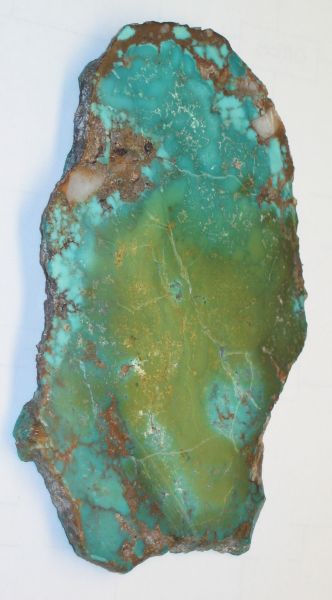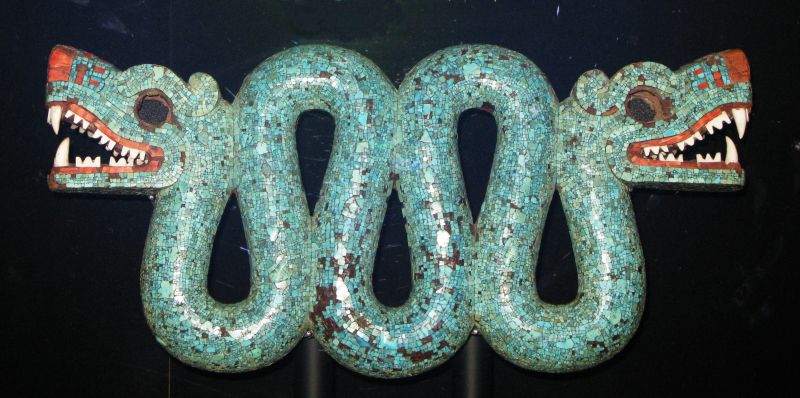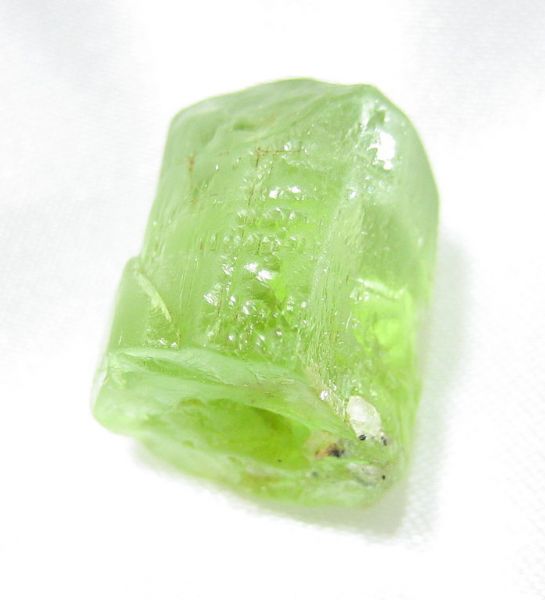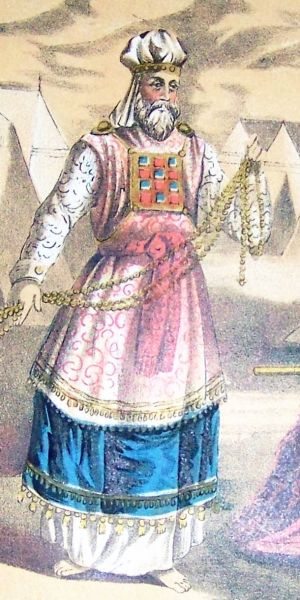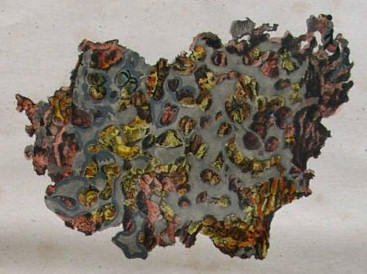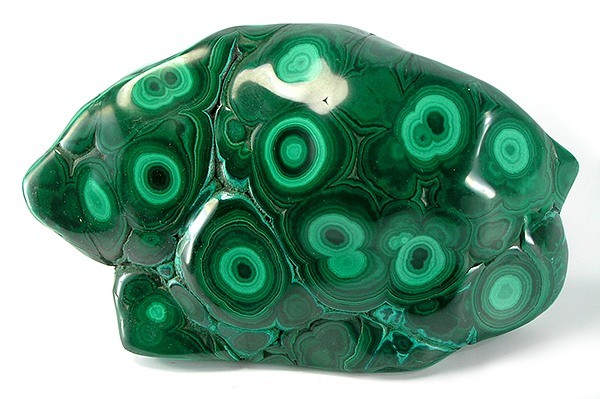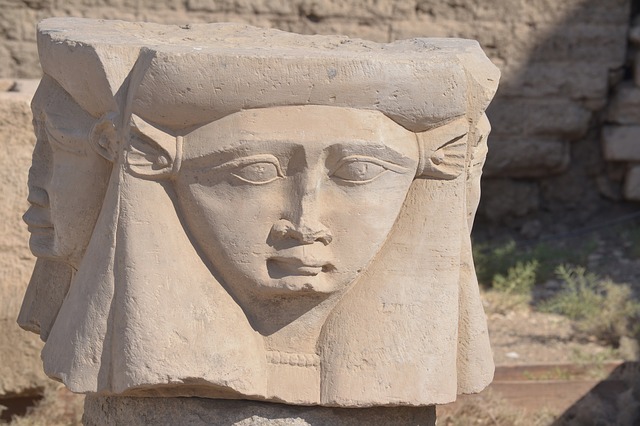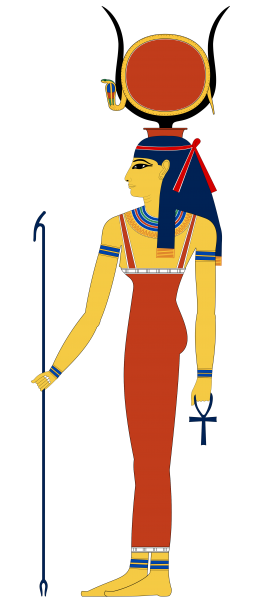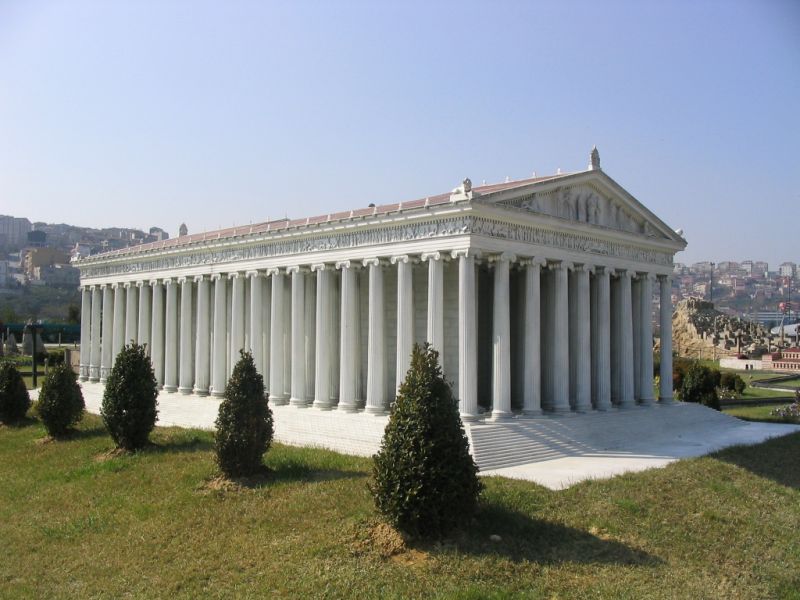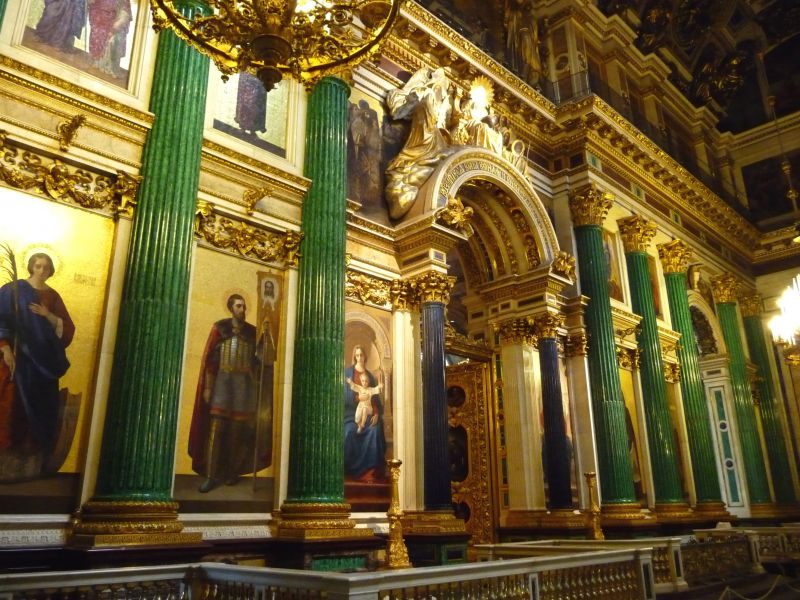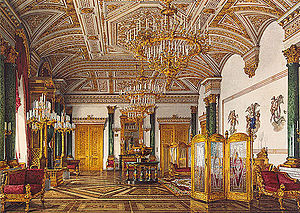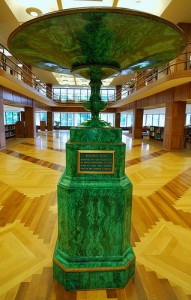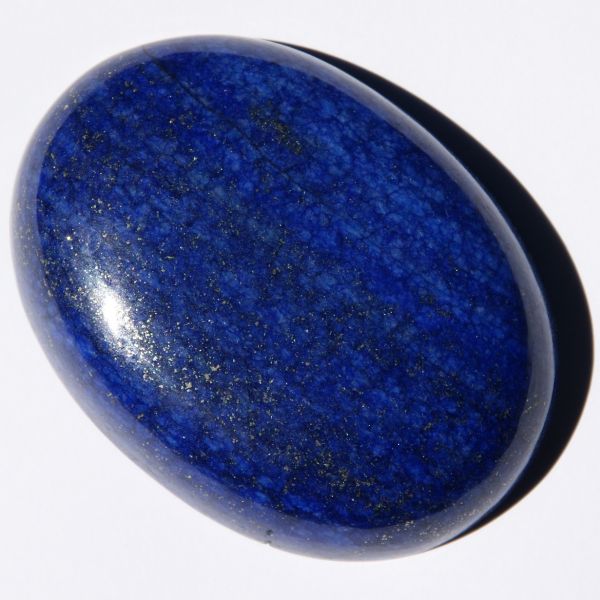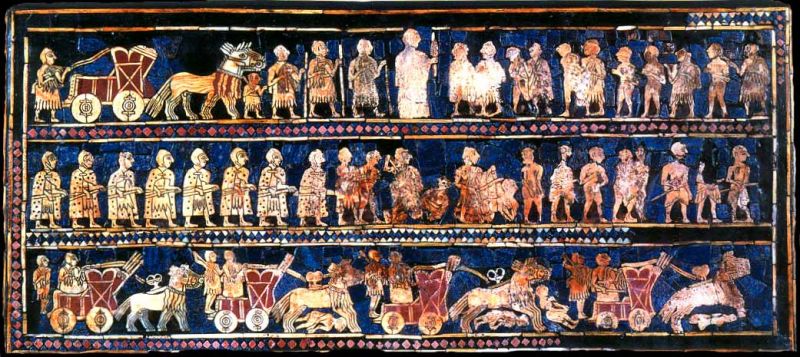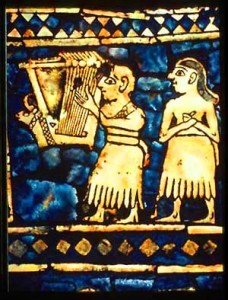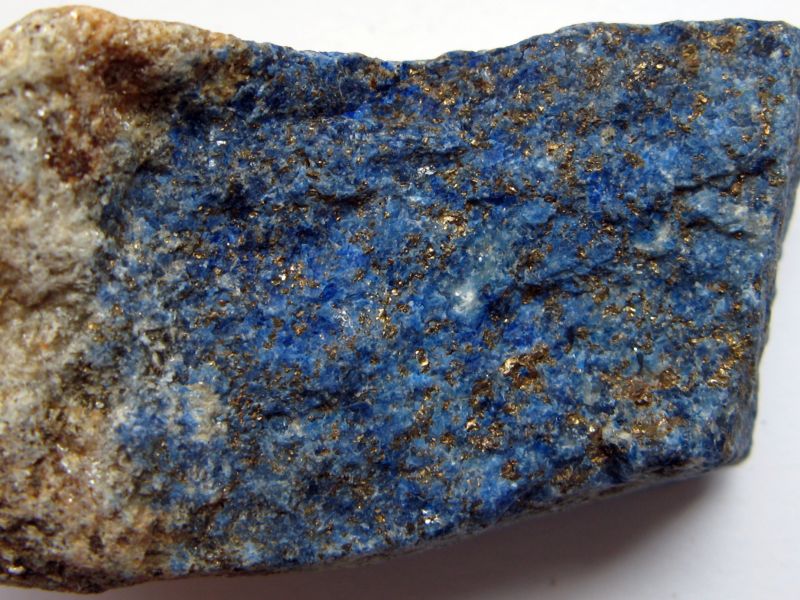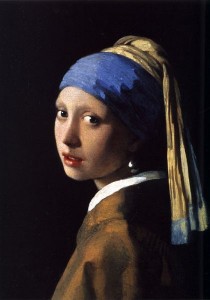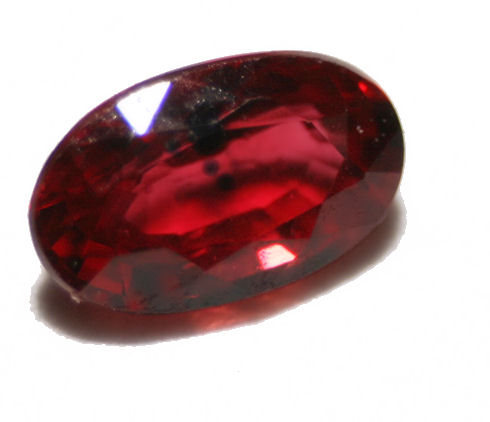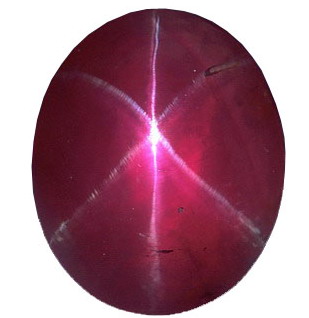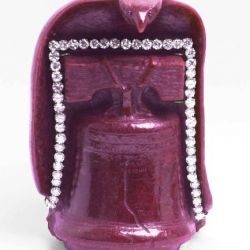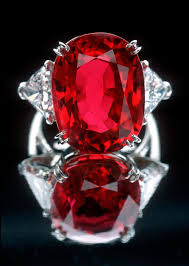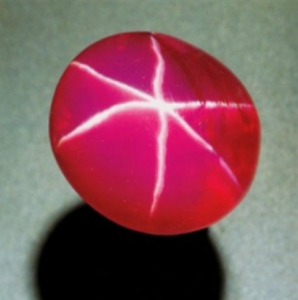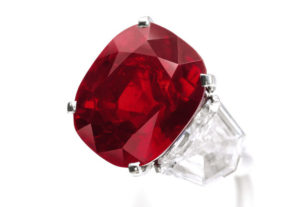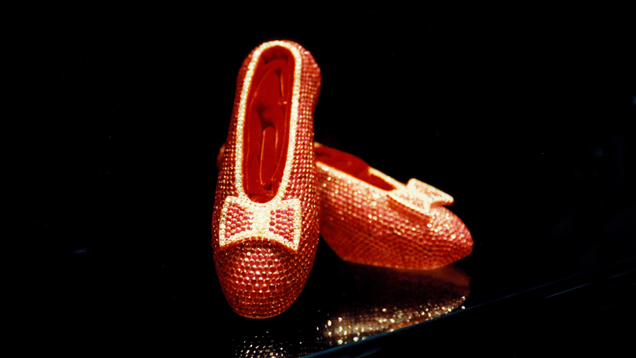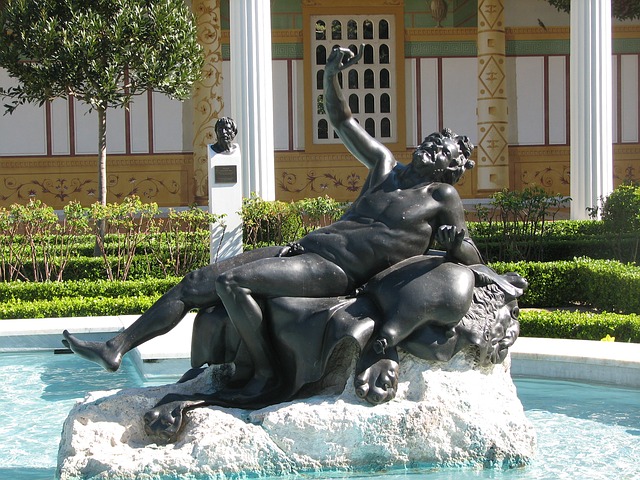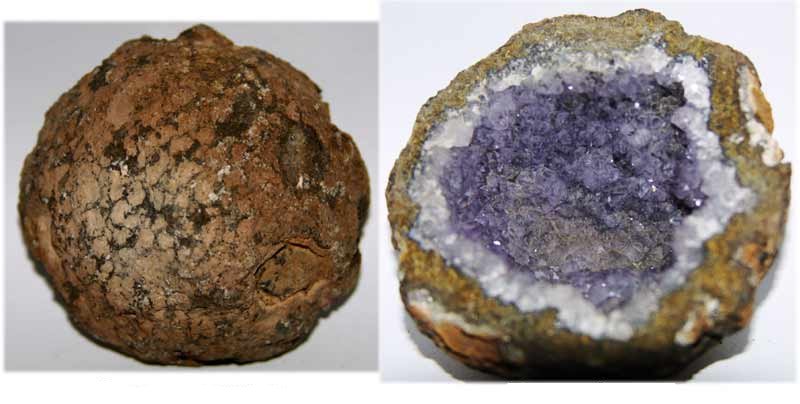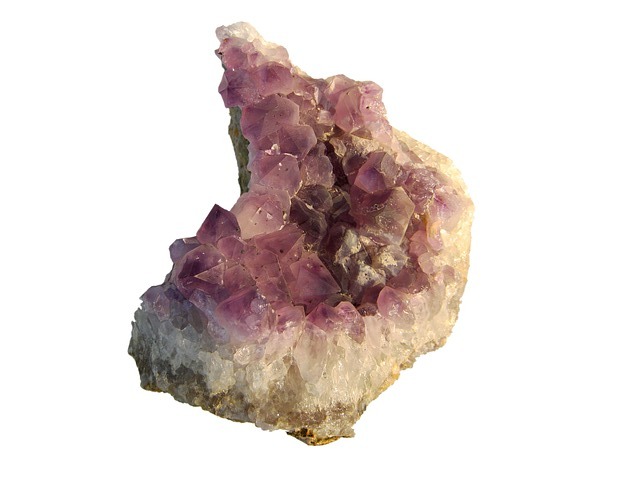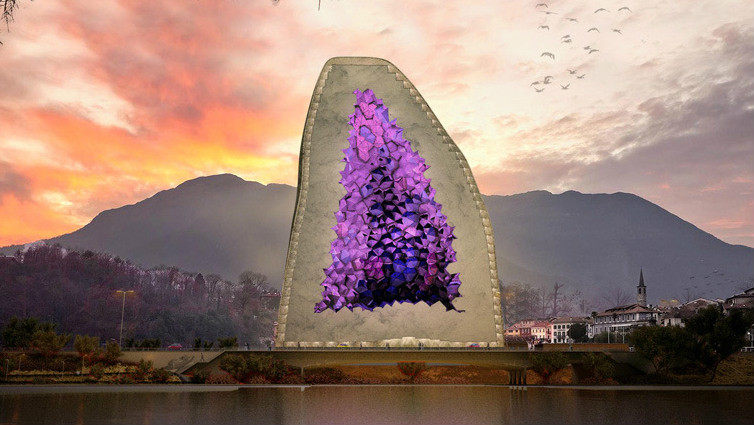Crystal History Series : Amethyst
Amethyst Origin
Amethyst is a semi-precious stone that derives its name from the Ancient Greek word “μέθυστος méthystos” denoting drunkenness.
This was in reference to the belief that Amethyst protects its owner from becoming inebriated. A stone worn on the body had a sobering effect, not only for the inebriation but in over-zealousness in passion. The religious leader’s often worn Amethyst to keep them grounded in spiritual thought.
This exquisite crystal was used as gemstones by the ancient Egyptians, while the European soldiers wore amulets, therefore they believed it would protect them, heal them and keep them calm.
Amethyst is a variety of Quartz, the second most abundant mineral in the earth’s crust after feldspar, which gets its violet colour due to the iron impurities and presence of trace elements.
Colour varies from light pinkish violet to deep purple.
The highest grade of Amethyst – “Deep Russian” – is very rare and valuable.
Natural Amethyst is dichroic in reddish and bluish violet but when heated turns yellow-orange, yellow-brown or dark brownish. Even partially heated amethyst turns into ametrine.
Physical
Boosts the production of hormones, stimulates the spathic nervous system and endocrine glands, blood oxygenation, digestive tract, hearing disorders, insomnia heart and stomach.
Strengthens the immune system and is wonderful as an elixir for arthritis. So it is good for the skin, alleviates pain, tension and lowers high blood sugar.
Emotional
Helps ease mental anxieties, identify negative behaviours, habits and emotional patterns, especially in overcoming addictions.
It promotes awareness, a sense of judgement, constructive thinking and acting.
Spiritually aids alertness, justice and an overall sense of inner peace.
Short Attributes
- Purifies the aura of negative energy and places a protective light shield around the body
- Provides the clarity of thought
- Aids with the relief of OCD (Obsessive Compulsive Disorder) and hyperactivity
- Brings calmness to an angry mind and soothes anxiety
- Centres those who are stressed or overwhelmed
- Helps with addiction and intoxicated drivers
- Aids the digestive tract as well as heart, stomach and skin
- Reduces pain, swelling and heals bruising
- Relieves headaches and reduces nervous tension
Read More
Crystal History Series : Amber
Amber Origin
Amber is fossilised tree resin, appreciated for its colour and natural beauty since ancient Neolithic times.
It is used for decorative pieces, jewellery, as an ingredient in perfumes and as a healing agent.

The molecular polymerisation occurs during high pressure and heat by overlying sediment transforms the resin into copal, continually heat rids terpenes and results in the formation of amber. Amber can sometimes retain its formation of drops or stalactites, lumps and irregular forms if found in hollow cavities or cracks in trees.
Amber is heterogeneous in composition but consists of resinous bodies. The decomposition occurs when heated above 200 degrees Fahrenheit.
It is usually a yellow-orange-brown colour but can range from a whitish, pale-lemon yellow, brown and even black.
Physical
Helps the stomach, spleen gallbladder, liver, joints, skin, mucous membranes, glands and intestine; aids teething in children, helps with allergies, rheumatism and diabetes.
Emotional
Helps adopt a carefree spirit, increases cheerfulness and trust, strengthens belief in oneself. It removes self-imposed obstacles and imparts a positive attitude that is fuelled by self-confidence. Draws out negative energy from the body and purifies the heart and spirit.
Short Attributes
Read More
Crystal History Series : Agate
Agate Origin
Agate derives its name from the Greek philosopher and naturalist who discovered the stone along the river Achates’ shoreline in the 3rd century BC.
Many colourful agates and chalcedonies were obtained from the river now called Dirillo in Sicily.
Evidence from the Neolithic period suggests that it was used as healing amulets and ornamentation. The ancient Greeks and Egyptians adopted it for medicinal and healing purposes, which spread to other civilisations in time.
It occurs as nodules in volcanic rocks or lavas and as volatiles in the molten mass. When the Agate fills veins in volcanic rock and underlain with granite, it appears as banded, riband and striped agate. It is recognised by its fineness of grain and brightness of colour.
Agates are common in merit, usually banded in layers, or stripes, eye markings, colour specks which vary from fossilized inclusions to solids. The concentric bands portray every colour the earth can produce, including a colourless form.
There are many forms of Agate, and they include:
- Blue Lace
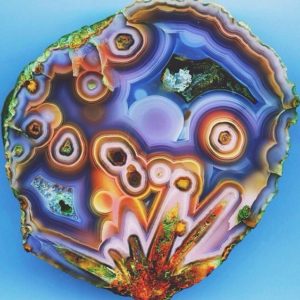
- Crazy Lace
- Dendritic
- Fire
- Laguna
- Moss
Mental
Blue Lace Agate dissolves internal tension, brings peace of mind, counteracts suppression of fear of judgement and rejection, reduces stress and neutralises anger.
It improves concentration, perception and analytical abilities.
Emotional
Agate has a low intensity and vibrates at a lower frequency, so it stabilises and strengthens gemstone.
It balances emotional, physical and intellectual energy as it offers inner stability, composure and maturity. This gorgeous crystal supports a sense of reality and pragmatic thinking whilst assisting the soul with protection, warmth, security and self-confidence.
Agate aids self-analysis, self-acceptance, self-confidence and speaking the truth.
Physical
Agate offers protection during pregnancy and helps the mother avoid the “baby blues”. A jewel worn between the breasts encourages lactation. It controls overindulgence and assists with multiple commitments.
Blue Lace Agate helps with skin disease, reduces inflammation and promotes regeneration and growth. It is the pregnancy stone for mother and child. Also, it aids disease in the eyes, stomach (gastro and ulcers) and bladder, and intestinal inflammation.
Wearing it in the middle of one’s chest can strengthen the cardiac muscles healing emotional disharmony.
It is great for arthritic conditions and straightens the skeletal system. It aids the uterus’s disease, protects from prolapse of the uterus and encourages normal shrinkage of the uterus after childbirth.
Short Attributes
Read More
Crystal History Series: Topaz Insight
The fiery stone Topaz was thought by some to be derived from a word in the ancient Sanskrit language. Tapaz or topas, meaning , you guessed it: fire. More commonly it is thought the captivating topaz stone was named for the small island in the red sea; Zabargad.
Zabargad was previously called Topazios and this is where, what was thought to be the mineral Topaz, was found in abundance. It was then discovered that this particular island mineral was in fact peridot or chrysolite which has often been confused for topaz.
Whatever the origin of the name, topaz is indeed a fiery gem of a crystal that comes in a range of colours that include red, yellow, blue green and even colourless.

This is not an extensive history of the topaz crystal. Just a few intriguing snippets of topaz insight from the realms of time that the team from International Crystals wanted to share with you!
 The Ancient Greeks
The Ancient Greeks
The ancient Greeks revered topaz because of their belief in its power of strength. They thought that if it was worn it would increase strength and also provide a cloak of invisibility in times of crisis and desperation.
The Romans
The Romans were firm in their belief that the crystal could help them to maintain a clear vision and improve their eyesight. As well as the Egyptians, the Romans associated topaz with their revered Sun God. The Egyptians also deemed to wear the stone in amulet form to ward off accident and injury.
 Indian Culture
Indian Culture
Indian culture believed that topaz was a stone of creativity that is beneficial to craftsmen and creative types such as writers and artists. The reason was that they believed the mineral opened the throat chakra. Thereby releasing a wealth of strong self-expression.
Ornamental Topaz
The imperial topaz got this name through the crystals popularity as an ornamental gem in the Royal stratosphere. The crystal, with a wealth of red hue, was worn by the Russian Czarinas in a variety of jewellery types. Hence the term ‘imperial’.
Topaz was also a famed asset in the Portuguese Crown Jewels. It was actually originally thought to have been a diamond at first due to the fact that this particular specimen was colourless. Named the Braganza Diamond, the stone is over 1600 carats
Read More
Crystal History Series: Obsidian Insight
This strikingly dark and sharp mineral, obsidian, is the result of a fabulous volcanic flow formation and was utilised extensively in certain Stone Age cultures as tools for cutting and engraving. To produce artefacts, weapons and other tools. It is still used in certain industries today due to its cuttingly sharp qualities.

This is not an extensive history of obsidian, rather a dip into the myths and facts that have fascinated the team at International Crystals which we thought we would share with you!
 A fantastic feature of obsidian is its variety in appearance due to the various types of impurities that embed during the formation process. (see the Snowflake Obsidian, left). This makes it a versatile mineral in which to craft visually appealing ornamentation and jewellery. It also enabled archaeologists the ability, in a lot of cases, to trace the various types of obsidian back to its origin of excavation. This allowed historians to determine an insight into the trading practices and distances in the geographical locations of where it was discovered.
A fantastic feature of obsidian is its variety in appearance due to the various types of impurities that embed during the formation process. (see the Snowflake Obsidian, left). This makes it a versatile mineral in which to craft visually appealing ornamentation and jewellery. It also enabled archaeologists the ability, in a lot of cases, to trace the various types of obsidian back to its origin of excavation. This allowed historians to determine an insight into the trading practices and distances in the geographical locations of where it was discovered.
Obsidian as a Stone Age Tool
The obsidian mineral was highly regarded in many Stone Age cultures for its ability to be crafted into a variety of tools and weaponry. Similar to flint, it could be splintered to form sharp arrowheads and cutting blades. It’s highly reflective surface meant that it was also utilised as an early mirror type.
A recent discovery in Arteni, Armenia has uncovered the extent of the Stone Age tool making industry there, The National Geographic reported that:
 Every square foot of ground, as far as the eye can see, is carpeted with fragments of glassy obsidian, many of them chipped and flaked into razor-sharp weapons and tools. “We are looking at the remains of a gigantic open-air workshop,” says archaeologist Boris Gasparyan of Armenia’s National Institute of Archaeology and Ethnology. Countless blades, hand axes, scrapers, chisels, arrowheads, and spearheads produced at the mountainside “factory” circulated over a vast exchange network that long precedes the oldest recorded instances of formal trade.
Every square foot of ground, as far as the eye can see, is carpeted with fragments of glassy obsidian, many of them chipped and flaked into razor-sharp weapons and tools. “We are looking at the remains of a gigantic open-air workshop,” says archaeologist Boris Gasparyan of Armenia’s National Institute of Archaeology and Ethnology. Countless blades, hand axes, scrapers, chisels, arrowheads, and spearheads produced at the mountainside “factory” circulated over a vast exchange network that long precedes the oldest recorded instances of formal trade.
The Lower Stone Age
Estimates of Arteni’s output are staggering. Active production is thought to date back to the Lower Stone Age, when the region’s first skilled artisans were early Neanderthals. Their successors mined the same materials up to 1000 B.C.E. Gasparyan and his Armenian associates, along with their American, Japanese, and European collaborators, have harvested thousands of Paleolithic tools at Arteni and other local sites.
The types of tools from the Stone Age were made through fracturing obsidian to create sharp flakes. This is termed as stone knapping. UC Berkeley post-doctoral researcher, Thomas Morgan, demonstrates stone-knapping, how hominin ancestors in the Stone Age crafted these cutting tools to carve up the fruits of their hunt. Morgan’s research into this practice suggests that, when passing on this skill to younger generations, the production methods drove the enhancement of communication and language in this era.
Obsidian on Easter Island
 The versatile obsidian mineral was used by the Rapa Nui people on the Chilean Polynesian island of Easter Island. Between the years 1250 and 1500 CE to carve the monolithic human figures of the Moai. The tribute at the time to their ancestors and a belief that they would hold their sacred spirits.
The versatile obsidian mineral was used by the Rapa Nui people on the Chilean Polynesian island of Easter Island. Between the years 1250 and 1500 CE to carve the monolithic human figures of the Moai. The tribute at the time to their ancestors and a belief that they would hold their sacred spirits.
Black obsidian or red scoria was used in the pupils of the statue eyes which have been replicated as many of the Moai figures were excavated and found that this part of the figure had dissipated. An interesting point to note is that although the Moai figures are full bodied statues, they are commonly referred to as Easter Island Heads. This is because many were buried up to their heads until they were fully excavated!
Obsidian in Surgery
 To this day, obsidian is used in certain operating theatres as a surgical cutting tool due to its razor sharp features which are said to be up to 200 times sharper than a normal steel surgery scalpel. This however, is not a new practice. A full medical kit containing obsidian instruments was discovered in an ancient Peruvian tomb that contained a chachalote (sperm whale) tooth knife, bandages, balls of cotton, and thread.
To this day, obsidian is used in certain operating theatres as a surgical cutting tool due to its razor sharp features which are said to be up to 200 times sharper than a normal steel surgery scalpel. This however, is not a new practice. A full medical kit containing obsidian instruments was discovered in an ancient Peruvian tomb that contained a chachalote (sperm whale) tooth knife, bandages, balls of cotton, and thread.
 These are glimpses into the practical uses of obsidian. However it has fantastic value as a protector against negativity if used carefully. For more on obsidian and other alluring crystals and minerals, arrange a visit to the International Crystals Showroom. Or peruse the beauty and vitality of each crystal at our online store.
These are glimpses into the practical uses of obsidian. However it has fantastic value as a protector against negativity if used carefully. For more on obsidian and other alluring crystals and minerals, arrange a visit to the International Crystals Showroom. Or peruse the beauty and vitality of each crystal at our online store.
Read More
Crystal History Series: Carnelian Insight
Carnelian is the stone that sends a ‘good luck’ message to the world! The Carnelian has been a talisman of luck throughout the ages. It was worn as a positive wish stone in a variety of eras. Most notably the royal environments of the 18th Century French and English regimes.
Carnelian is a stone that brings warmth and inspiration and has been worn for protection, empowerment. In some civilisations as a symbol of certain status.

This is not an extensive history of the Carnelian crystal. Instead of a dip into the myths and facts that have fascinated our team. We thought we would share with you!
 Carnelian for Courage
Carnelian for Courage
Ancient warriors considered the carnelian to be the stone of courage and used it in battle—the Thirteenth Century book of mythical text, The Book of Wings. Raziel indicates that carnelian was used to halt blood flow and grant honour to the stone’s wearer. This belief extends into one of the present uses of carnelian. Consequently, that of being worn by a person who may be timid or quiet. So to give them the courage to make themselves noticed and heard.
Carnelian in Minoan Culture
In Knossos in Crete, artefacts that contained Carnelian were discovered that date back to 1800 BC. This area housed the hierarchy and political community of the Minoan civilisation in the structure of the palace of Knossos. A series of workrooms and home areas were unearthed close to a central square within which murals, pottery and seals were discovered containing carnelian stone engravings.

 Carnelian in Neolithic Culture
Carnelian in Neolithic Culture
In the Pakistan region of Mehrgarh there lies a hugely important Neolithic site. One that showcased the farming life of the time for archaeologists, dating back up to 6500 BC. There, it was discovered that the ancient drilling tool, the bow drill, was used to drill holes into carnelian. It was said to create friction to spark an ember for fire. A very apt use as it is said that the warmth of the carnelian stone was often used as a symbol of fire.
Carnelian in Roman Times
Carnelian was also predominately used in Roman times for engraving purposes for seals. The carnelian stone did not stick to hot wax and so the engravings were used for the emblem imprint on the seals which were then used to protect essential documents through travel.
Carnelian in Egyptian Culture
In Egypt, the carnelian is one of the oldest crystals to have been mined. It was said to have been worn as a symbol of architectural status by ancient Egyptian architects who could display their elevated rank as a builder. This symbol carries through to one of the carnelians’ present uses as a stone of professional support for builders, architects and construction workers to assist in the creation of structures.
 In ancient Egypt, the stone was described as ‘the setting sun’ and was also used in the Djed Pillar Amul, representing the god Osiris’s backbone. The amulets were placed on mummies in order to provide endurance through eternity with the carnelian purporting to symbolise the regeneration of life.
In ancient Egypt, the stone was described as ‘the setting sun’ and was also used in the Djed Pillar Amul, representing the god Osiris’s backbone. The amulets were placed on mummies in order to provide endurance through eternity with the carnelian purporting to symbolise the regeneration of life.
Carnelian in Eastern Culture
The stone signifies luck and loyalty in eastern countries to this day. The Prophet Mohammed was said to wear the carnelian stone in a ring to protect from evil and jealousy. It became a worn symbol of protection for many in the Eastern world and was typically carved with prayers asking for luck and to keep envy and jealousy away from the wearer.
Today the carnelian stone is a stone of courage and leadership, it brings love and warmth through its fiery red hues whilst providing motivation and stability thereby creating an assured direction of ones path in life.
You can watch our Free Videos on Crystals HERE
Learn to become a Crystal Therapist HERE
Find out the benefits of a Crystal Healing Session HERE
See our wonderful selection of Healing Crystals HERE
Read More
Crystal History Series: Rose Quartz
The ultimate heart stone, the stone of unconditional love! Rose quartz has, for hundreds of years, been heralded as a talisman of the positivity of love and relationships. The beauty of the dusky pink quartz has incorporated its rosy, mythical properties into ancient legend as far back as 600- 700 BC.

The crystal is an enabling stone that encourages you to start the growth of love from within. As if you don’t find acceptance and love within yourself from the start then it is ultimately going to be difficult to transfer that loving energy onto someone else. Or for another being to turn to you for love.
This is one of the reasons why the rose quartz has been a highly significant stone within the beliefs and mindset of civilizations going way back in time.
This is not an extensive history of the Rose Quartz crystal. Its rather a dip into the myths and facts that have fascinated the team at International Crystals. Something which we thought we would share with you!
Adonis, Aphrodite and Rose Quartz
 The Greek myths and legends are bountiful in the tales of lust, love, passion and despair. One such tale tells the story of how Rose Quartz became a symbolic stone for a love reconciled and rejuvenated.
The Greek myths and legends are bountiful in the tales of lust, love, passion and despair. One such tale tells the story of how Rose Quartz became a symbolic stone for a love reconciled and rejuvenated.
Ares was the Greek God of War and was also the husband of the beauty that was Aphrodite. The Goddess of Love who signified all things beautiful. Ares established a fierce jealousy and hatred for the God of Fertility. Adonis who also happened to play a leading role in Aphrodite’s heart as her lover.
So incensed with this jealousy, Ares turned himself into a wild, ferocious boar and attacked Adonis unmercifully, so fatally wounding him. Aphrodite was so distressed by the attack and the wounding of Adonis that she ran to his side and once there, caught herself on a briar bush and drew blood. That blood blended with the blood of Adonis and fell onto some nearby quartz staining it a dusky pink signifying the symbolic hues of rose quartz.
Zeus, seeing the sorrow of love lost, took pity on the torn lovers and decreed to bring back Adonis to Aphrodite for six months of every year. The blood stained quartz bloomed into the beauty of the rose quartz which became a symbol of the love shared, lost and then renewed by Zeus. This symbol has continued through the ages into the present day.
Cupid, Eros and Rose Quartz
The story is told in another Greek legend that the God of love. Cupid, along with his partner in love Eros carried the rose quartz stone into human civilisation with the goal of spreading the loving energy and desire of the stone into the world.

The rose quartz crystal is still used for this purpose to this very day. Sealing and spreading loving vibes, strengthening relationships and desires and creating compassion within.
Isis and Egyptian Legend
 Immersed with the strength and power of the definitive femininity, Isis was revered as the Egyptian Goddess of Life. She was the symbol of the standards to emulate as a wife and mother and the love and devotion required to reach and maintain these standards.
Immersed with the strength and power of the definitive femininity, Isis was revered as the Egyptian Goddess of Life. She was the symbol of the standards to emulate as a wife and mother and the love and devotion required to reach and maintain these standards.
The tale is told that Isis utilised the cleansing powers of rose quartz in her daily beauty routine. She took the rose quartz specimens found in the shale of rivers and used them to cleanse her face using the circular, upward motions that are still popular to this day. It was believed that using the rose quartz as a facial scrub would keep the skin firm and rejuvenated, therefore sustaining the beauty of the feminine face.
When this beauty routine was complete, it is said that Isis would leave and a stone would be dropped from the heavens to mark the spot so Isis knew where to return for her cleansing routine. The Temple of Isis in Philae in Egypt was erected in the reign of Nectanebo I during 380-362 BC and was solely dedicated to this revered Egyptian Goddess.
Rose Quartz: Did You Know?
 One of the magnificent buttes in the monumental American attraction, the Grand Canyon, is named the Isis Temple after the Goddess who maintained her beauty using rose quartz. No one knows why it was named so and speculation is rife about what early explorers may have found when naming the formation as it is infused with vertical seams of dull rose quartz.
One of the magnificent buttes in the monumental American attraction, the Grand Canyon, is named the Isis Temple after the Goddess who maintained her beauty using rose quartz. No one knows why it was named so and speculation is rife about what early explorers may have found when naming the formation as it is infused with vertical seams of dull rose quartz.
In the Oriental cultures, Rose Quartz is a highly revered stone for its ability to connect with higher spiritual frequency channels. It is honoured in the East and is a major stone for the use of ornate carving in China to this day.
Rose Quartz is an important Feng Shui stone for the rejuvenation and strengthening of love and relationships. It dispels negativity and soothes away the pains that are caused by negative love energy and disharmony. It is a stone that, when placed in your bedroom, emits a constant loving energy that will penetrate if one is receptive to the calming and soothing influences.

We will be happy to help with any questions and we are also happy to impart our healing crystal insight at bespoke events and gatherings! Rose Quartz Crystal can help with addiction.
Read More
Crystal History Series: Turquoise Insight
When you see or hear the word turquoise, thoughts can automatically turn to the vibrant blue hue of the aqua shaded colour that the name emits. Then we think of the crystal that supports that colour. A crystal that has been a significant gem stone throughout history where it has been a feature in many civilizations in a variety of ways. It is thought that the name was derived, in the 13th Century. Its from the French word pierre tourques which means Turkish stone as it was thought to have travelled from Turkish mines in the historical Khorasan Province of Persia
View Gemzworld Collection of Turquoise

The stone is thought to have been used as a protection against evil for centuries. Also a talisman of good fortune and health with findings showing that the Chinese used it for intricate carvings and the ancient Egyptians as adornments of jewellery.
This is not an extensive history of the Turquoise crystal. Rather a dip into the myths and facts that have fascinated the team at International Crystals. Something which we thought we would share with you!
Turquoise in China and Tibet
Let’s firstly take a look at China, where the turquoise mineral was revered nearly as much as the Chinese revered Jade at the time. Little turquoise was actually mined in China, it was produced through trade, as far back as the thirteenth century. Mainly with the Mongols, Tibetans, Turks and Persians.
 Excavations in the huge Bronze Age site of Erlitou in the Henan Province of China uncovered remnants of what is thought to be the Xia or Shang Dynasty. It was thought to have been occupied at around 3500 to 1250 BC. Amongst the eight identified palaces in Erlitou, artefacts that were linked to graves were discovered that were made of turquoise, bronze and jade. A significant find was the oldest known dragon totem that incorporated over 2000 pieces of turquoise. This is said to date back over 3700 years. It is said that around 80% of turquoise mined worldwide is now sourced from China and Tibet.
Excavations in the huge Bronze Age site of Erlitou in the Henan Province of China uncovered remnants of what is thought to be the Xia or Shang Dynasty. It was thought to have been occupied at around 3500 to 1250 BC. Amongst the eight identified palaces in Erlitou, artefacts that were linked to graves were discovered that were made of turquoise, bronze and jade. A significant find was the oldest known dragon totem that incorporated over 2000 pieces of turquoise. This is said to date back over 3700 years. It is said that around 80% of turquoise mined worldwide is now sourced from China and Tibet.
Healing Properties
In Tibet, legend is that turquoise was valued highly for its healing properties. Furthermore it was believed that most Tibetans carried a piece to ward off ill health and as a means of protection from evil. It was also thought to have been traded as currency in Tibetan culture. The stone is the national gem of Tibet and Tibetan turquoise has a definitive blue, green hue that often contains a spider web matrix. The main mining areas are associated with the high mountains at the North of Bhutan.
Turquoise in Ancient Egypt
As well as green malachite, the Goddess Hathor was also associated with the blue, green hues of Turquoise. Because the colour green in Egyptian mythology was said to signify flourishing health. The blue quality of turquoise signified protection, fertility and luck.
Egyptians favoured turquoise for jewellery and ornamentation. The oldest excavated piece is said to be the turquoise and gold bracelet discovered on the wrist of Queen Zer which dates back to about 5500 BC. The crystal was also a popular adornment for the tombs of Royalty and the famous Pharaoh, Tutankhamen. He had the gem embedded in his tomb and his burial mask.
Turquoise and the Aztecs
In ancient Mesoamerica, turquoise was highly valued for its rarity, beauty and healing properties. It was said to have been brought to the Aztecs from what is now America. Also it was said that the Aztecs thought this stone would protect them and give them strength in battle. It is believed that, before battle, they formed arrow heads from turquoise for greater accuracy. They also bored holes in their teeth and adorned the holes with turquoise.

The health protection properties of turquoise made it a popular offering to the Aztec Gods and also as Gifts for other tribes and civilisations. One of these gifts is thought to have been from the Aztec emperor, Moctezuma II, to Spanish conquistador Hernán Cortés on invasion in 1519. It is a double headed serpent sculpture of which the body is carved in wood and inlaid with turquoise, conch shells and crab shells. It is was thought to have been used in Aztec religious ceremonies and is currently on display in the British museum.
Turquoise in Persia
 Persians revered the turquoise gem stone and the location was thought to have the oldest natural turquoise mines. It was also said that the best quality mined stone came from this area which was typically a ‘robin egg’ blue with a lack of the usual spider web matrix within. Also it was extensively used in objects and ornamentation as well as used to adorn religious and important buildings within the land. It was often etched in words of Arabic and inlaid in gold.
Persians revered the turquoise gem stone and the location was thought to have the oldest natural turquoise mines. It was also said that the best quality mined stone came from this area which was typically a ‘robin egg’ blue with a lack of the usual spider web matrix within. Also it was extensively used in objects and ornamentation as well as used to adorn religious and important buildings within the land. It was often etched in words of Arabic and inlaid in gold.
As the national stone for Millennia, the gem was worn around the wrist or neck to protect the wearer against the circumstance of unnatural death. Doom was said to be imminent for the wearer if a change of colour was apparent in the stone, however if the moon cast a reflection on the crystal then it was said to bring luck!
Read More
Crystal History Series: Peridot Insight
There’s something about the vivid green hue that flares from the Peridot as the light refractions capture an almost x-ray insight as it moves through various and alternative angles.
Many civilisations throughout history thought there was something too. In fact the ancient Egyptians referred to it as ‘the gem of the sun’. The meanings and beliefs throughout the world varied through time but the stories are fascinating and these Peridot tales are the foundation of symbolism and rituals that have been carved through time and firmly embedded into the present.

This is not an extensive history of the Peridot crystal, rather a dip into the myths and facts that have fascinated the team at International Crystals which we thought we would share with you!
Let’s firstly take a look at some of the ancient Egyptian insight into their relationship with the Peridot gemstone. As we have mentioned they called it ‘the gem of the sun’ and the stone had a strong association with the Egyptian culture and landscape. In fact the main, ancient, source of Peridot was said to come from the heart of the Egyptian Red Sea on an island then known as Topazos Island however now named Zabargad or St John’s Island.
Peridot on the Island
The island could be found just under 40 miles from the Egyptian coastal port of Berenica and is formed from uplifted mantle from the Red Sea lithosphere with crustal metamorphic rock. The island contained three peridotite masses, saturated with the natural green peridot. In explored existence, according to Pliny the Elder, since the 4th Century BC, the peridotite masses were utilised as a mining source from these ancient times.

This mining was said to be oft times unpleasant with stories told of the area of source being infested with snakes, the story intimates though that an innovative Pharaoh drove them into the sea (now who does that remind you of Irish readers?!)
It was also said that the local inhabitants were put to the task of mining the beautiful peridot and worked day and night. The night time mining was made easier by the visual glitter and glare of the peridot stones so the miners could mark the mining spots to collect in the daylight that followed. Special guards were said to man the island and were ordered to kill any trespasser that dared to approach the treasure trove of peridot in the mines.
The strong belief was that the peridot, when embedded in gold would create a powerful talisman that could dispel night time terrors and ward off bad dreams. It is also rumoured that the emeralds so strongly associated with the iconic Egyptian, Cleopatra, were in fact high grade peridot that produced a similarly vibrant colour.
Peridot and the Priest’s Breastplate
 Way back to the old testament with this and to the brother of the man of the Ten Commandments, Moses. The brother’s name was Aaron and he was one of the appointed priests and leader of the Levitical Tribe of Israel.
Way back to the old testament with this and to the brother of the man of the Ten Commandments, Moses. The brother’s name was Aaron and he was one of the appointed priests and leader of the Levitical Tribe of Israel.
The Book of Exodus described the guidance and direction of God for these priests and included:
‘You shall make a breastplate of judgment, the work of a skilful workman; like the work of the ephod you shall make it: of gold, of blue and purple and scarlet material and fine twisted linen you shall make it. You shall mount on it four rows of stones…’ (Exodus 28:15-17)
Of the four rows of stones, the middle one was described as Topaz of which Peridot was also named. Wikipedia describes the inclusion of the stone as:
Pit’dah (פִּטְדָה = in the masoretic text) / Topazios (in the Septuagint) – despite the suggestion of the Septuagint that it was Topaz, Topaz was scarcely known at the time the Book of Exodus was written (according to both the traditional dating of the book and that by textual scholars); in the classical era, topazios referred to Topazos Island on which a particular yellow mineral was mined (topazios means to seek, in reference to the difficulty in finding the island).
Others suggest that topaz was merely peridot, a light green semi-precious stone, and which stone in the ancient world was found primarily on Topazos Island as well as on St. John’s Island (Zabargad) in the Egyptian Red Sea. The word pit’dah is thought by scholars to be connected with the Assyrian word hipindu, which refers to something that flashed (presumably meaning shimmered), and thus the jewel in question would fit the description of Chrysolite, a translucent greenish yellow mineral, common throughout the Levant, and particularly found on a particular island in the Red Sea, under the control of the Egyptian Pharaoh.
In connection with this the many ecclesiastical crusades of the Middle Ages also found Peridot in the treasure trove of items brought back from these travels. They were used for ecclesiastical garments and as ornamentation on church utensils.
Constructed in 1248 with completion only in the nineteenth century, the Three Kings Cathedral in Cologne recognised Peridot as one of the gems enriching the shrine of the Three Kings where the remains of the three wise men are said to lay. Dating back to 1190, the shrine was opened in 1864 and found to contain bones and garments. The peridot on the shrine had originally been thought to be the similarly coloured emerald.
Peridot is Out of this World!
Indeed it is! Peridot, though rare has been found in meteorites which have landed from deep space and in some cases this type of peridot has been used in jewellery!

Olivine, which is the same mineral, yet not gem quality has also been discovered on the planet Mars and also the moon. The Mars find was said to be due to an asteroid crash that exposed the peridot growth in the crater it left called the Isidis Basin. It was discovered by NASA’s Mars Global Surveyor!
Read More
Crystal History Series: Malachite Insight
Malachite is both a stunning and rare crystal that has increased its rarity due to its popularity way back through time.
This copper carbonate hydroxide mineral has a spectacular visual appeal comprised of deep vibrant green and black bands that have enchanted civilisations throughout history. The malachite stone was thought to increase wealth, protect the traveller and fortell impending disaster.

This is not an extensive history of the malachite crystal, rather a dip into the myths and facts that have fascinated the team at International Crystals which we thought we would share with you!
Malachite and Hathor
Winding back to the myths and legends of the Gods and Goddesses of Ancient Egypt and a name that stands out is that of Hathor, the Lady of Malachite who was also referred to as The Great One of Many Names.
Why?
Because she had many names of course!
The Goddess was strongly linked with the Milky Way which was said to represent the milk from the heavenly cow’s udders falling down to earth and, thus, she appears in pictoral and visual sculpture in the form of a Goddess figure pictured with the head of a cow.
As the Mistress of Heaven and the Celestial Nurse she was also said to have nursed Pharaoh and was strongly linked to women as the Goddess of fertility.

That’s not all though! Here’s the link to the stunning beauty of Malachite!
 Hathor was also known as the Goddess of Beauty and linked to the wonderful cosmetics of Ancient Egypt. This included the impactful kohl eyeshadow that was worn at the time of which one type was formed from ground Malachite.
Hathor was also known as the Goddess of Beauty and linked to the wonderful cosmetics of Ancient Egypt. This included the impactful kohl eyeshadow that was worn at the time of which one type was formed from ground Malachite.
Malachite was said to be the source of one of the first industries of the Sinai area of Egypt which is now known as the Suez Canal. As far back as 4000 BC the malachite crystal was popular with the Egyptians for its therapeutic properties as it was believed that the startling green stone was a protector against the plagues of the time.
Cholera was endemic and the slaves who mined the mineral appeared to be unaffected by the disease so it was common for malachite to be worn around the arms and head in order to ward off the disease.
The mines were said to be under the spiritual realm of Hathor who was called the Lady of Malachite as the stone was also said to bring joy and happiness. In fact, inscriptions of worship to Hathor at the ruins of the old mines can still be seen today.
Malachite in Ancient Greece
In ancient Greece the stunning malachite was used by children’s cradles and beds as it was thought it would protect against evil spirits. Amulets of malachite were also fashioned for children for this reason.
At the time, the sun was known as the protector of all things evil from ‘the dark side’ so to ward off these dark forces an image of the sun was engraved into malachite and worn or carried as protection.
The stone was also used by adults for jewellery and ground into powder for cosmetic eyeshadow, however one of the most famous uses of malachite in ancient Greece was as decorative ornamentation in the famed Temple of Artemis.

One of the Seven Wonders of the Ancient World, the Temple of Diana or Artemis was said to have been built around 560 BC. Constructed in Ephesus (now in present day Turkey), the Temple was to honour the Goddess Diana or Artemis who was also the twin sister of Apollo. Diana was known as the Goddess of Hunting and the Moon Goddess.
The famous first century philosopher and Roman historian, Pliny the Elder described the Temple of Diana as being extensively decorated with malachite. When built, the structure was four times as large as the Parthenon of Athens.
Malachite and Russian Royalty
Large deposits of malachite were mined in the Ural Mountains of Russia and was a favourite of the Tsars of Russia who used it extravagantly to decorate their properties.
When we refer to large deposits of malachite, these were normally mined at around 20 tonnes a time with the largest deposit weighing an almighty 260 tonnes. The extensive use for decoration saw that the mines were near depleted in the 1800s.

The malachite was put to good use though! The Grand Kremlin Palace in Moscow housed gigantic malachite veneered pilasters in the Royal Tsar’s private dwelling named Catherine Hall. The stone was also used in the Corinthian columns that supported the icon wall within the realms of St Isaac’s Cathedral in St Petersburg.

Still in St Petersburg, the famed Hermitage Museum contains a room dedicated to the beauty of Malachite, aptly called ‘The Malachite Room! The Hermitage museum was once the Winter Palace of the Russian Royal Family and the Malachite Room was the drawing room of the wife of Nicholas I; the Empress Alexandra Fyodorovna. It was totally made of Malachite and contains spectacular decorative vases that showcase the beauty of the malachite stone.
 The Malachite Tazza
The Malachite Tazza
One of the largest pieces of malachite in the US is in the form of a Tazza that was given to the German born philanthropist August Heckscher by Tsar Nicholas II in 1910. It was donated to the Linda Hall library in 1972 and is a focal centre piece of the main reading room to this day.
Read More
Crystal History Series: Lapis Lazuli Insight
With a mining history dating as far back as the 7th Millennium BC in the Sar-i-Sang mines in the Badakhstan region of northeast Afghanistan, Lapis Lazuli has garnered popular appeal from multitudes through the ages.
The exquisitely deep blue stone, often attractively flecked with the gold hue of pyrite, has been used time and time again through civilisations, for decorative, ornamental and practical purposes to fortify the belief of the mineral according to the wearer.

Lapis Lazuli long been considered to have been the fifth stone in the original breast plate of the high priest and has also, throughout the ages, been linked to famous artistry due to its vibrant colour being utilised as a pigment for early paintings and crafted sculpture.
This is just the tip pf the iceberg though, there are so many references to the beauty and uses of Lapis Lazuli throughout history that define it as a stone that held significance for many.
This is not an extensive history of the Lapis Lazuli crystal, rather a dip into the myths and facts that have fascinated the team at International Crystals which we thought we would share with you!
Lapis Lazuli in Mesopotamia
Dating back to the Neolithic Age, Lapis Lazuli has been sourced from Afghanistan and used as export and trade to the Mediterranean and southern Asia. Bead of Lapis Lazuli have been discovered on the ancient trade routes between Afghanistan and the Indus Valley.
The mineral was also used for ornamentation in the ancient Mesopotamian Sumerian City-State and artefacts were discovered in the Royal tombs of Ur that highlight the use of Lapis Lazuli at the time. The excavations took place between 1922 and 1934 and were led by the archaeologist Sir Charles Leonard Woolley who, amongst the 1850 burials unearthed, discovered 16 that were regarded as the Royal Tombs and contained the historical artefact, The Standard of Ur.

The Standard of Ur is an intriguing mosaic that was discovered in a tomb associated with Ur-Pabilsag; a king who was said to have died around 2500 BC. It was found in a corner of the chamber close to a man with a pole, lending the assumption that the mosaic had previously been affixed to it, which is why Woolley gave it the name it is known by now; The Standard of Ur.
 The mosaic of the standard used was crafted by materials that included Lapis Lazuli and shell with the mosaics cemented together by bitumen glue. The recovered mosaics depicted scenes of war and peace. War was interpreted to have described early representations of the Sumerian army and their battle and capture of the enemy. The captured enemy appeared in naked form on the mosaics as this was how Mesopotamia, at the time, symbolised death with nakedness.
The mosaic of the standard used was crafted by materials that included Lapis Lazuli and shell with the mosaics cemented together by bitumen glue. The recovered mosaics depicted scenes of war and peace. War was interpreted to have described early representations of the Sumerian army and their battle and capture of the enemy. The captured enemy appeared in naked form on the mosaics as this was how Mesopotamia, at the time, symbolised death with nakedness.
The Peace mosaic depicted the King hosting a banquet at which there appears to be a lyricist or musician to provide the entertainment. Other images showed men drinking from cups and the food of the time such as small fish. A fascinating insight into history embedded with the still vibrant blue of the Lapis Lazuli!
Lapis Lazuli in the Egyptian Era
 Across the Mediterranean in ancient Egypt, lapis lazuli was a popular stone for use in ancient scarabs which have been a widely used source of historical interpretation for historians due to the carvings and inscriptions on them which have stood the test of time.
Across the Mediterranean in ancient Egypt, lapis lazuli was a popular stone for use in ancient scarabs which have been a widely used source of historical interpretation for historians due to the carvings and inscriptions on them which have stood the test of time.
Lapis Lazuli has also been discovered in Pre-Dynastic Egyptian sites. Pre-dynastic refers to the time from the earliest settlements until the time of the first Pharaoh Narmer around 3100 BC.
A site near Naqada on the Western banks of the Nile unearthed artefacts that included ornamentation inlaid with the deep blue of lapis lazuli that dated back to the insightful Naqada culture of the time. The image shows a bone sculpture recovered from Naqada inlaid with the startling blue eyes of the lapis lazuli.

The lapis lazuli mineral was used widely in Egyptian culture in a variety of ways. As well as the scarabs, it was also used in pendants and amulets and other jewellery. It was also used extensively as a pigment as it was ground into powder for use as dyes and even eye shadow. (It was said the Cleopatra adorned her eyes with the blue pigment.) The dyes were used on the garment cloths of Royalty and priests as it was said to define their status as aligned with the Gods.
The burial tombs of ancient Egyptian Kings and Queens were infused with ornaments that were embedded with lapis lazuli; this included the inlaid ornamentation of the golden sarcophagus of King Tutankhamen. As noted by the crystal author, Raphaell, the Egyptians believed that the vibrant blue of the mineral was a stark contrast spiritually to the desert sand landscape of their environment and the pyrite flecks of gold mirrored the stars in the night sky. They believed that by meditating with these colours, the spiritual vibrations and forces would transform their lives.

The author also indicates that the lapis lazuli mineral was used to heal through medicinal creations. As the Egyptians believed that the soul was housed in the brain and existed in the mind, they thought of lapis lazuli as a soul purifier and a healer of the mind. The stone was ground into powder and mixed with gold and used as a poultice placed on top of the head to draw out any existing demonic possession of a person. Sometimes a hole was actually drilled into the skull and the medicinal mixture poured into the head!
 Lapis Lazuli on Vermeer’s Girl with the Pearl Earring
Lapis Lazuli on Vermeer’s Girl with the Pearl Earring
We had to mention the use of Lapis Lazuli in the revered and iconic painting by the Dutch painter, Vermeer!
At the time the Girl with the Pearl Earring was painted in the mid seventeenth century, most artists were using the cheaper, azurite, for the blue pigmentation in their art. Vermeer however chose to use the highest quality paints which are thought to have been hand ground by himself, even though there were signs of paints starting to be produced about this time.
Used on the turban of the Girl with a Pear Earring, the first coat was a mixed opaque palette of white lead with the ultra-marine blue of lapis lazuli and then this was glazed with a very thin layer of the startling blue mineral pigment. Thus creating the iconic picture that is instantly recognisable today!
Read More
Crystal History Series: Famous Ruby History and Insight
The rich royalty of the colour of the ruby has attracted the eyes of many throughout the ages.
With the name derived from the Latin word, ruber, which means red, the deep colour of the ruby has signified passion, lust, anger and intensity that has mirrored the association with the colour red in many other ways.
The difference with the red ruby, as a gem, is the richness and royalty that has been associated with the wearing of the stone. In fact, in the ancient language of Sanskrit, the ruby is referred to as ratnaraj, meaning king of precious stones.
Through history, many thought it signified the life blood flowing through each and everyone’s veins and, hence, it was thought to bring the power of life to the wearer.

Named as one of the four precious stones, along with Sapphire, Diamond and Emerald, the Ruby has stood out in history due to;
- the type and size of stone that has been cut, set and used in significant occasions in history
- the association of the ruby with the history and significance of the owner or wearer at momentous occasions throughout the ages.
Whilst the team at International Crystals are mainly interested in the impact of our crystals on you as a person, we thought it would be fun to bring you into some fascinating insight about six major rubies that have made their mark on history.
Rosser Reeves Star Ruby
 The early history of this exquisite large ruby with a star formation is unclear however it is known that it is sourced from Sri Lanka. It surfaced in London in the late 1950s where it was cut and shaped so as to ensure the ruby star was centred.
The early history of this exquisite large ruby with a star formation is unclear however it is known that it is sourced from Sri Lanka. It surfaced in London in the late 1950s where it was cut and shaped so as to ensure the ruby star was centred.
It was bought by the American advertising executive, Rosser Reeve, who carried it around in his pocket for luck and was purported to refer to it as ‘his baby’. He donated the stunning star ruby to the Smithsonian in 1965.
Liberty Bell Ruby: Stolen in a Heist
The Liberty Bell ruby was the largest mined ruby of its time and was sourced in East Africa in the 1950’s.
 The appeal of the Liberty bell ruby was not the quality of the gem but the uniqueness of the sculpture as it was fashioned in to the liberty bell shape and guarded by an eagle and embedded with fifty diamonds depicting the number of American States.
The appeal of the Liberty bell ruby was not the quality of the gem but the uniqueness of the sculpture as it was fashioned in to the liberty bell shape and guarded by an eagle and embedded with fifty diamonds depicting the number of American States.
It was stolen in a heist in 2011 from the Stuart Kingston Jewellers in Wilmington where it was awaiting a potential sale to a philanthropist who was, also potentially going to donate it to charity.
In 2014 four men were arrested and indicted on charges relating to the heist though there has been little hope that the €2 million valued ruby will be recovered.
The Love Story Ruby
 A ruby of 23.1 carats, the Carmen Lucia is named for the Brazilian born wife of one of the founders of the famous Subway sandwich chain; Peter Buck.
A ruby of 23.1 carats, the Carmen Lucia is named for the Brazilian born wife of one of the founders of the famous Subway sandwich chain; Peter Buck.
The ruby’s mining origin was the Mogok region of Burma, now known as Myanmar where it was sourced in the 1930’s. It passed through the hands of many European families until it was bought by a New York jeweller and hidden away in a safe deposit box.
Carmen Lucia had admired the gem and after her untimely passing her husband decided to acquire it in her memory and donate it in her honour to the Smithsonian National Museum of Natural History where it can be viewed in the museum’s National Gem Collection, part of the Janet Annenberg Hooker Hall of Geology, Gems and Minerals.
Another Steal: The De Long Star Ruby
This cachabon, six ray star ruby was sourced from Burma in the 1930’s and weighed 100.32 carats. It was purchased by Mrs. Edith Haggin de Long from Martin Leo Ehrmann in 1937 for $21,400 and donated to the American Museum of Natural History in New York.
 What is fascinating about this story is that the ruby was subsequently stolen and held to ransom in a heist in 1964 along with the famous jewels; the Star of India and the Midnight Star. The latter two gems were recovered in a locker in a bus depot in early 1965 but there was no sign of the De Long Star Ruby.
What is fascinating about this story is that the ruby was subsequently stolen and held to ransom in a heist in 1964 along with the famous jewels; the Star of India and the Midnight Star. The latter two gems were recovered in a locker in a bus depot in early 1965 but there was no sign of the De Long Star Ruby.
Months of negotiation followed with an unknown communicant who held the De Long Star Ruby. The negotiations ended when a ransom deal was struck for $25, 000. This was paid by a wealthy businessman, John D MacArthur who oversaw its recovery at a designated drop off spot which just happened to be a phone booth in Florida of all places!
The World’s Most Expensive Ruby
 Named the Sunrise Ruby, this stunning gem is the world’s most expensive ruby and considered to be amongst one of the rarest of all gemstones.
Named the Sunrise Ruby, this stunning gem is the world’s most expensive ruby and considered to be amongst one of the rarest of all gemstones.
In fact, the Burmese ‘pigeon-blood’ ruby that weighs a staggering 25.59 carats was sold early this year in Geneva for the amazing price of €27,300,000 … yes that’s €27.3 million Euro!
The Harry Winston Ruby Slippers
Dorothy would be Proud!
We cannot write a post about the beauty and alluring appeal of the ruby without the mention of the tribute to Dorothy’s famed ruby slippers from the endearing film, The Wizard of Oz!

Image Credit: Harry Winston
The Chairman of the Harry Winston jewellery Company commissioned a set of real ruby slippers to commemorate the fiftieth anniversary of the film.
The slippers are said to incorporate 2,329 rubies and diamonds on each shoe that measure a teeny size 4 shoe size and the sparkling ruby red footwear is said to be worth $3 million.
They would certainly have your feet dancing!
Read More
Crystal History Series: Amethyst Insight
The Amethyst Crystal: A Glimpse into Greek Mythology
Amethyst history is what myth and legends are made of! This stone carries the theme of protection against intoxication. All through history, these amethyst tales are the foundation of symbolism and rituals that have been carved through time and firmly embedded into the present.
This is not an extensive history of the Amethyst crystal. It is instead a dip into the myths and facts that have fascinated the team at International Crystals. Which we thought we would share with you!
Let’s first take a look at the stories of the Amethyst Crystal in ancient Greek mythology. The tales and fables have been passed on through time, with many variations to each story told. With the Amethyst crystal, the God of intoxication, known as Dionysus or Bacchus, plays a central role in these myths. Here are a few of the stories that involve him.
Dionysus | Bacchus
Greek mythology holds Dionysus as a popular figure who played a role in the importance of alcohol and intoxication. As far back as 1500 – 11000 BC. He was the last God to have been accepted into Mt Olympus and, as a God, represented:
- wine making
- wine
- grape harvests
- religious ecstasy
- theatre
- fertility
- ritual madness
A God of uncertain origin, Dionysus was thought to have arrived from as diverse places as Ethiopia and Asia and by others he was declared Thracian or Greek. The Romans adopted the God by the name Bacchus due to the induced frenzy created by him with all things pleasurable such as music, dance and wine.
This freedom and liberation also gave him the name Eleutherios which means ‘the liberator’. Who was known to act as a communicator of the divine, between the living and the dead.

Bacchus and Amethyste
The French poet, Remy Belleau (1528-1577) was purported to have made up a tale of Bacchus with the fair maiden Amethyste in his poem, ‘L’Amethyste, ou Les Amours de Bacchus et d’Amethyste’ . This means Amethyst or the loves of Bacchus and Amethyst. In this tale, the powerful God pursued the maiden, Amethyste, who did not return these advances and rejected his propositions. Out of desperation, to ward off his persistence, Amethyst turned to prayer and made a plea to the Gods to remain chaste.
Diana, the god of Chastity, heard the prayer and answered it by turning Amethyste into a pure white stone. Feeling humbled, Bacchus chose to pour the best of red wine over the stone in an offering to her desire to remain chaste and thus turned the rock into the purple colour. That now signifies the Amethyst crystal we know today.

Dionysus, Amethystos and Artemis
This is a variation of the last story in that it involves changing colours in a representation of the purple hue of the Amethyst.
Dionysus was in an almighty rage as he had been insulted by a mortal being and, in his anger, he had sworn to destroy the next mortal who crossed his path by creating ferocious tigers to carry out the destruction. A young woman named Amethystos was the first to encounter Dionysus.
She was on her way to give homage to Artemis. He was the revered Goddess of wild animals, the wilderness, virginity and childbirth when she met the ferocious tigers. Seeing her plight, Artemis saved Amethystos by turning her into a pure crystalline quartz statue. This saved her from the tiger’s claws and subsequent slaying. On seeing the beauty of the figure, Dionysus was overcome with remorse. Then he began to weep tears of red wine over the quartz thereby turning it into the purple colour of the Amethyst.

Amethyst Crystal History – Interesting Insights
These two variations hold the same message that resulted in a belief that was passed down for Centuries. The amethyst crystal or stone would protect the user or wearer from intoxication and drunkenness. So it promotes soberness and clear-headed thought. In this regard, it was worn by medieval European Soldiers as amulets to protect them in war.
This innocence and protection of purity was a firm belief in the Western world of Catholicism in the middle ages. Where the amethyst crystal was widely worn by bishops, who wore amethyst rings to signify this protection. The amethyst crystals are also used in ceremonial wine goblets to protect from the intoxicating and drunken tendencies.

Amethyst Crystal Hotel …. Really!
The soothing and calming properties of the Amethyst is currently being developed into a hotel in China. Yes, a hotel!
Architects are planning a hotel designed to represent a geode sliced in half with an amethyst design. The hotel is the first in a series of hotel plans formulated in a crystal design and is set to be built on an artificial island named Ocean Flower. The amethyst interior intends to capture the sunlight reflections to create vivid appeal and emulate the crystal refractions of a soft, soothing glow in the evenings.
We think Amethyste and Amethystos, along with Bacchus, Dionysus, Diana and Artemis left a lasting legacy with the tale of the Amethyst, and the soothingly protective Amethyst crystal is set to be used in more weird and beautiful ways to comfort people in life. Read more on crystals for addiction.
Read More











 0 items in cart
0 items in cart 